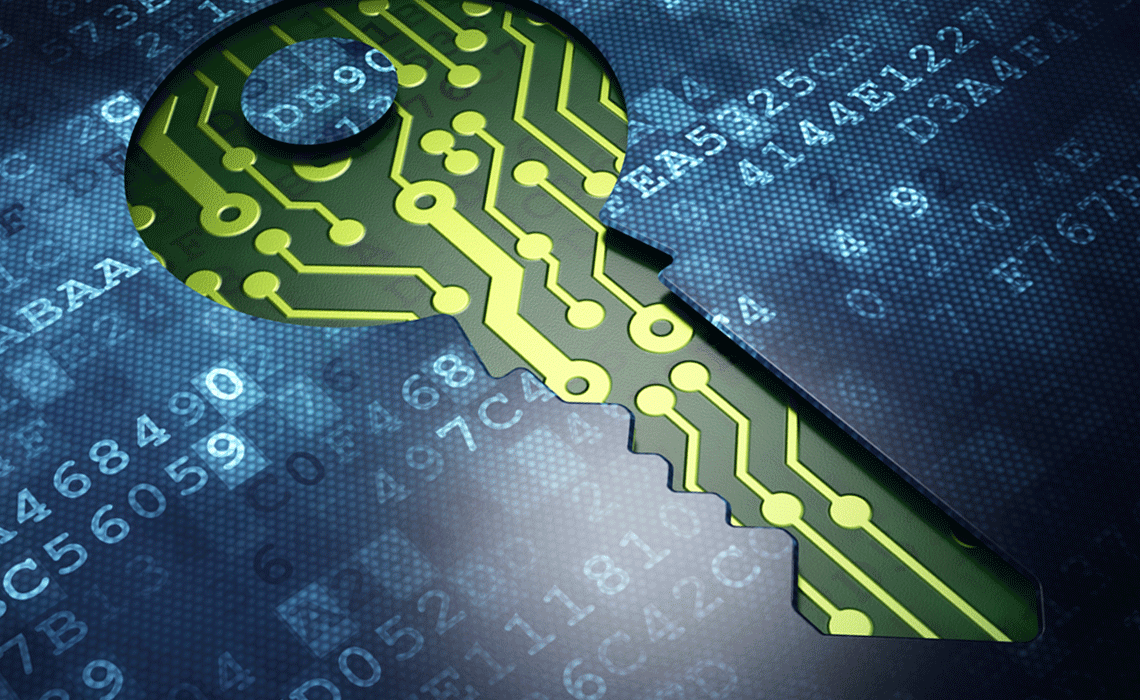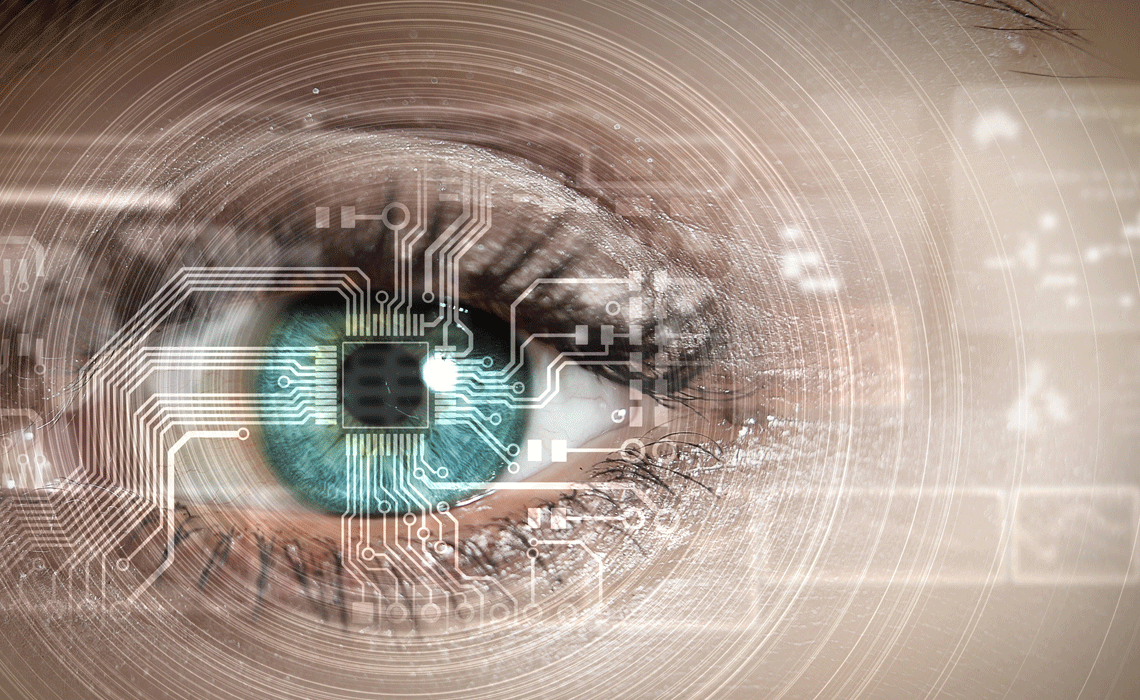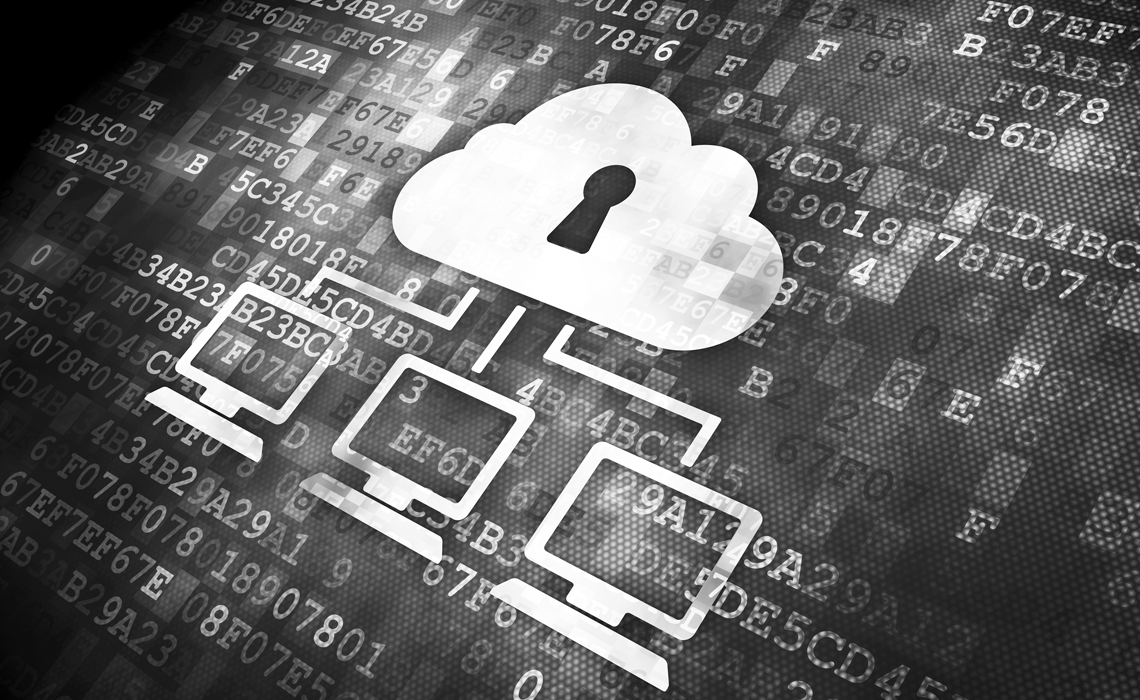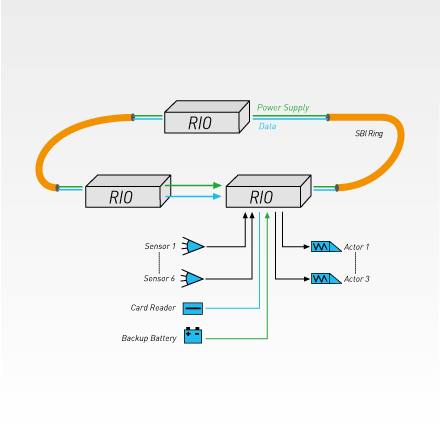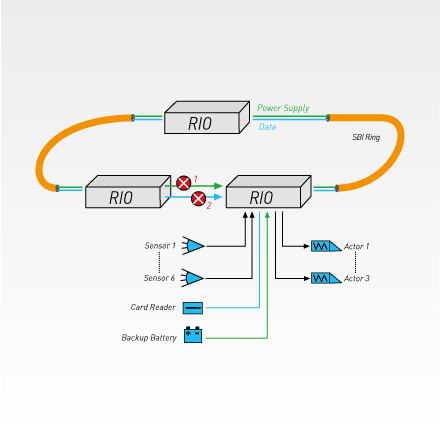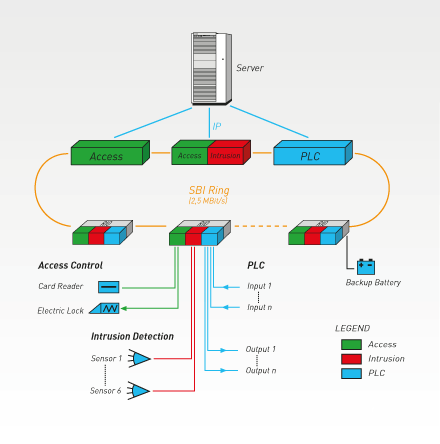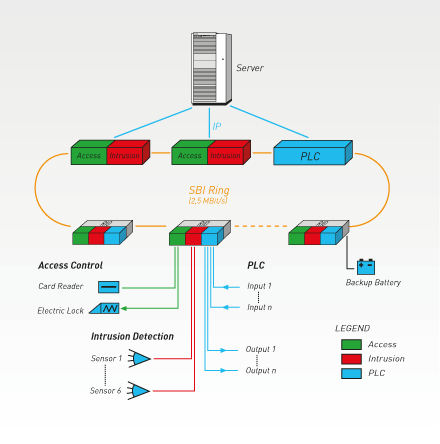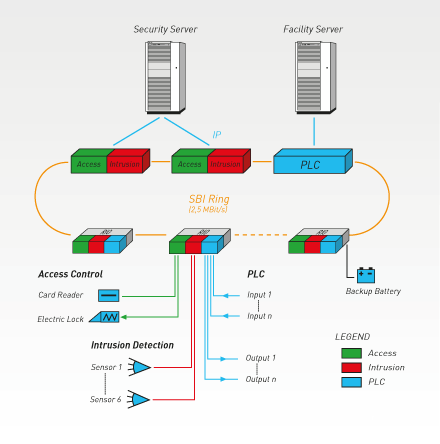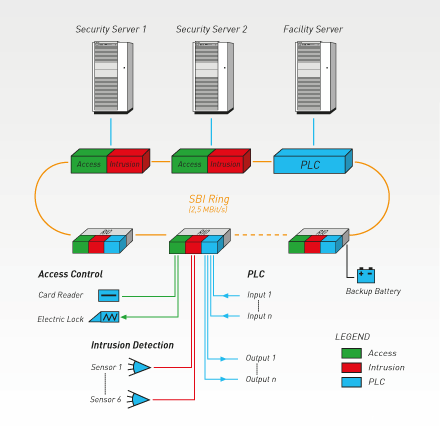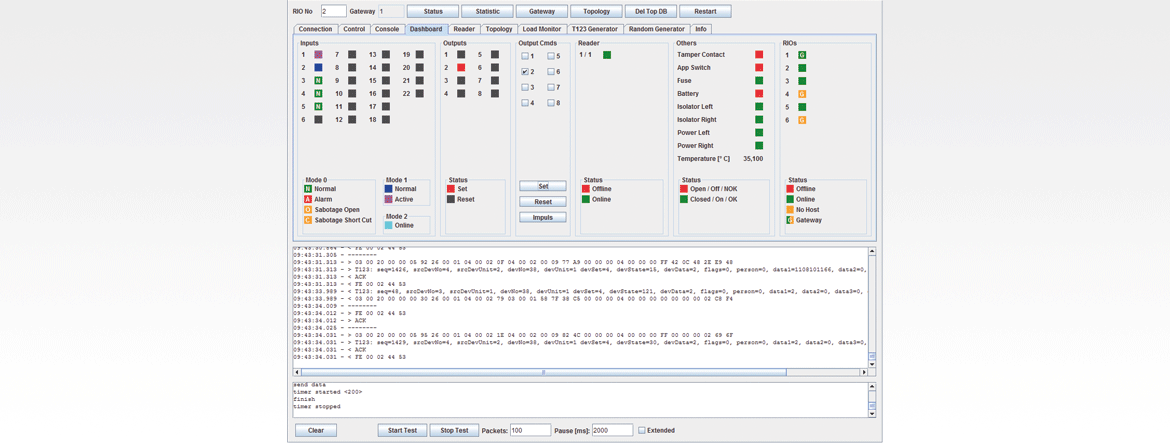TITAN Quantum
The demands in the field of electronic security are trending towards high availability and a combination of
multiple systems in one integrated solution. TITAN electronic is offering TITAN quantum – a product that fulfils these requirements. TITAN quantum
is a high-speed and high availability system for data transmission and power distribution to security sensors and actors in a field installation.
It allows to combine the subsystems access control, intrusion detection and PLC into one system. This solution consists of RIOs (remote input remote output) which are connected in a ring-bus-system.
Each RIO has an integrated real-time multi-master ring-bus protocol to ensure interaction with each other. The protocol permits real-time measuring of analogue sensor values synchronized to a system
clock in the range of 1 microsecond. In case of power supply failure or data line failure, the system automatically isolates the failure and switches to bus
mode to guarantee further functioning. In that way, a single point of failure does not result in a system fault.
Additionally, the solution provides cryptographic functions like encryption, integrity check and authorization.
Therefore each RIO has an AES key store and a random generator for use in a 3-pass-mutual-authentication to external host systems. The overall system functions can be easily used via the
data interface on each RIO and can be monitored via the RIO-Tool software.
ALL IN ONE
- Access Control
- Intrusion Detection
- Programmable Logic Controller (PLC)
